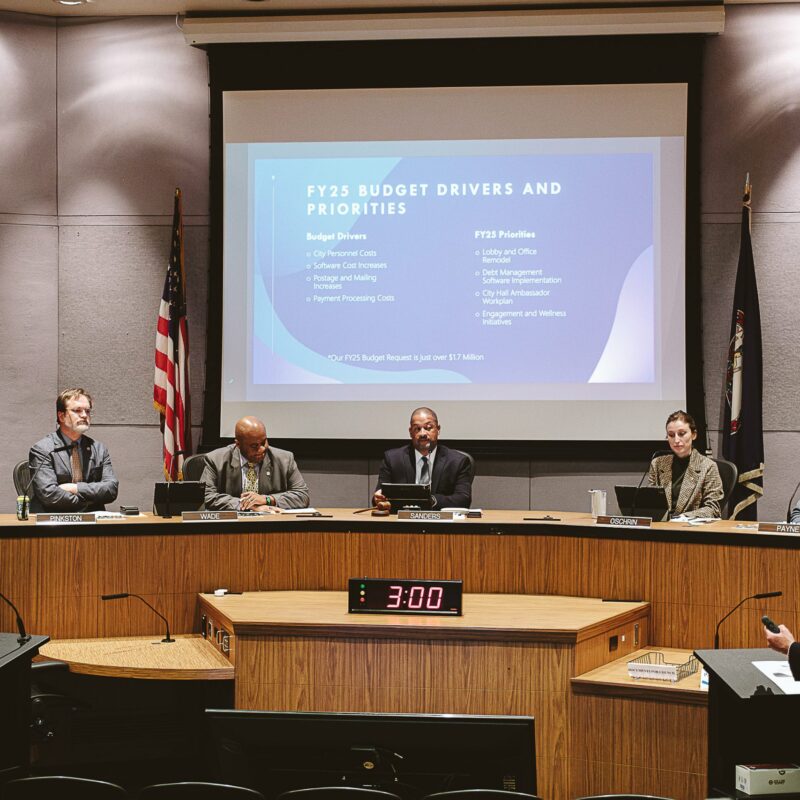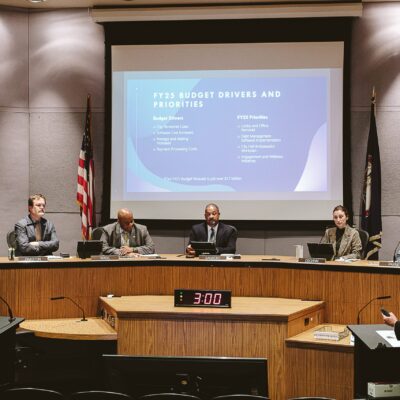Last Tuesday night’s “Digitalis,” the annual computer music festival at UVA, was different from most computer music concerts I have been to for three reasons. First, it was well attended. Second, most of the audience was not waiting their turn to take the stage. Last, it delivered on the most promising element of computer music: interactivity.
|
Matmos, the electronic duo that incorporates elements of musique concrete into pop music, gave a headspinning lecture the day before their performance at “Digitalis.” |
Erik DeLuka’s “The Bats of Carlsbad Cavern” best captured the interactive potential of the sea of laptops in Old Cabell Hall. After dividing the crowd into 12 sections, DeLuka instructed audience members to open his application (downloaded prior to the event), enter their section number and, on his cue, all start his program simultaneously.
Gradually, a striking sonic experience emerged. The curved architecture of Old Cabell became the mouth of a cavern, and laptop speakers created a swarm of crying bats swirling around the room in a subtle yet distinct physical pattern. DeLuka orchestrated the rare feat of transporting, if only for a moment, listeners away from their reality into his created world.
Other pieces also employed the crowd laptop ensemble with varying degrees of success. Megan England’s “blip.” encouraged the audience to voice phonetic phrases (“sigh,” “beep,” “bzzz”) while “Unity Groove” presented a game in which users were encouraged to match a sounding tone—different on each laptop—to their neighbors’ tone by adjusting its pitch and tempo.
While these pieces blended the audience-performer relationship, they also challenged pieces on the program less interested in aural crowdsourcing. Aurie Hsu and Steven Kemper, for example, combined dance and sound in “Shadows No. 4” by attaching sensors to Hsu’s body, creating information then translated into sonics by a program manned by Kemper. Hsu’s guided and articulate motions contrasted with the broad sonic groans produced digitally, creating a mesmerizing schizophrenic performance.
Matmos, the headliners at “Digitalis,” delivered a complex performance only matched by their intense rhetoric. (At their lecture in the music department the day before, had I been playing post-structuralist bingo, I would have won at least three times in the first four minutes.) Using live video, a qi measuring device, electric pedal steel, samplers, house beats, bells, keyboards and voice, they expertly evoked their musique concrete techno into being.
Near the end of Matmos’ last piece, some members of the audience took their laptops and left early. Despite avant-garde techniques and mastered showmanship, it turns out random sonic chaos is much more fun when everyone’s involved.






